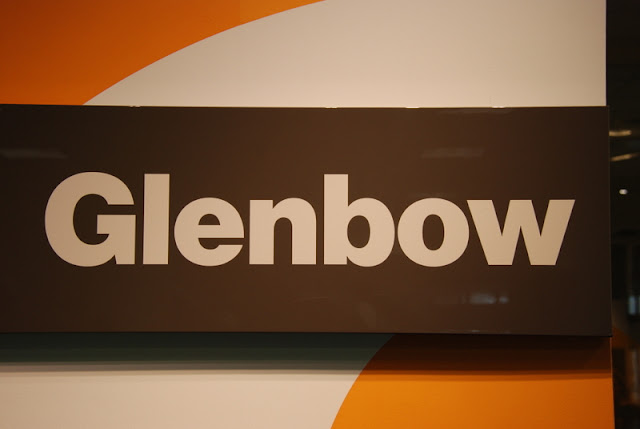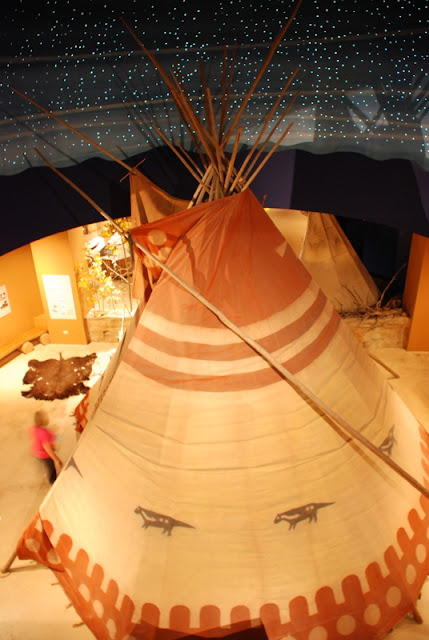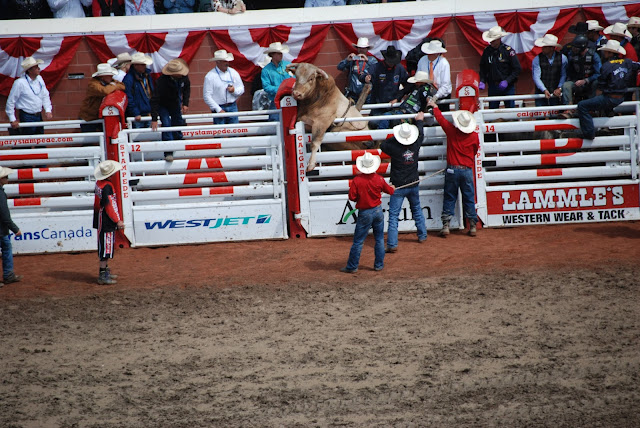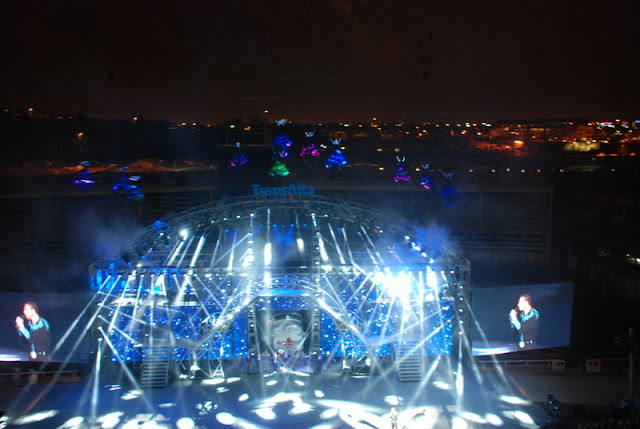Our First Stop
Fort Steele, British Columbia!
Fort Steele was a gold rush boom town founded in 1864 by John Galbraith. The town was originally called "Galbraith's Ferry", named after the ferry set up by the city's founder over the Kootenay River. It was the only ferry within several hundred miles so Mr.Galbraith charged very high prices to get across. The town was renamed Fort Steele in 1888, after legendary Canadian lawman Superintendent Sam Steele of the North-West Mounted Police solved a dispute between a settler who had unjustly accused one of the local First Nations men with murder. This dispute had caused a great deal of tension between the town and the native people. Sam Steele, finding no real evidence against the accused natives, had the charges against them lifted. Both the town and the First Nations people were so grateful that they renamed the town Fort Steele. Much to Steele's dismay, the "Fort" part of the name comes from the NWMP setting up a station in the town, whereas the town itself was never a real fort.In the late 1890s, Fort Steele was growing rapidly, becoming the heart of the East Kootenays. The Canadian Pacific railway showed interest in Fort Steele. It was decided that a station was to be built. But as the document stating the railway was to go though Fort Steele was on its way to be approved, a gentleman named Colonel James Baker had other ideas. Baker, a member of the British Columbia legislature, owned a small logging camp named Joseph's Prairie. Baker bribed and blackmailed his fellow Members and convinced them to bypass Fort Steele and bring the railway through Joseph's Prairie. This was final after the document stating the railway was to go through Fort Steele was "lost" in the mail. After the railway was completed, Baker renamed the town to Cranbrook. He later sold the people of Fort Steele land. Fort Steele's population quickly dropped as the population moved to the more appealing Cranbrook.
After Fort Steele was abandoned, the site slowly started to decay. A highway was even built right through the town's current main street. In the mid-1960s, B.C parliament started to preserve many historic sites. In 1967, Fort Steele was designated a historic site and restoration began. The highway was abandoned in the early 1960s for a more favorable route.
In 1969 Fort Steele opened to the public as Fort Steele Heritage Town. Over the past 45 years, millions of tourist have visited the site, and Fort Steele has become one of British Columbia's premier tourist attractions.
The scenery is always so majestic as we drive to Calgary Alberta!


When Marathon Realty and Husky Oil built their new head offices in Calgary, they proposed building the tower both to honor Canada's centennial year of 1967 and to encourage urban renewal and growth of the downtown core. The structure was designed by W.G. Milne & A. Dale and Associates, and was designed to withstand earthquakes and winds of up to 161 kilometres per hour (100 mph). Construction began on February 19, 1967, and completed in 15 months at a cost of C$3.5 million. The column of the tower was built from an unprecedented continual pour of concrete. Pouring began May 15, 1967 and was completed 24 days later at an average growth of 7.6 metres (25 ft) per day, a rate that was praised by industry officials as an "amazing feat of technical and physical workmanship".
Upon completion, the Husky Tower stood 190.8 metres (626 ft) tall and was the tallest structure of its type in North America. It dominated the Calgary skyline, standing well over twice the height of the previous tallest structure in the city, Elveden House. Developers deliberately misled the public, claiming the tower would stand 187 metres (614 ft), in the hopes of preventing competing developers from surpassing the Husky Tower's height record. Shortly after officials in San Antonio, Texas attempted to claim the record in announcing the completion of the 190 metres (620 ft) Tower of the Americas, developers revealed the Husky Tower's true height.
The Husky Tower officially opened on June 28–30, 1968, in three separate ceremonies. It had two elevators that could take visitors to the observation level in just over a minute at a cost of $1 for adults and 50 cents for children under 13. The observation level featured a lounge/restaurant called the Hitching Post.
Marathon Realty acquired a controlling interest in the tower in 1970.The structure was formally renamed the Calgary Tower on November 1, 1971 as a tribute to the citizens of the city. It is still called the Husky Tower by airport officials, however, to distinguish it from the tower at the Calgary International Airport.
The Petro-Canada Centre's west tower overtook the Calgary Tower as the tallest structure in Calgary in 1983.Until 2011, the 215-metre (706 ft) skyscraper was the tallest building in the city, while the twin-towers of Bankers Hall, completed in 1989 and 2000 have also surpassed the Calgary Tower. The Bow, completed in 2012, is now the tallest building in Western Canada at 236 meters. Encana Corporation, the owner of the Bow, was initially interested in purchasing the Calgary Tower when construction on the Bow began as a marketing attempt and also to house some corporate meeting rooms and offices inside, but the owners declined to sell. A study conducted in 1982 proposed building an additional 85-metre (279 ft) shaft on top of the existing pod that would feature a second observation deck. The plan was never seriously considered, however, and the owners of the tower remain satisfied with its height.
The tower underwent significant renovations between 1987 and 1990. The upper levels of the tower were closed in January 1987 for five months of construction that saw a $2.4 million refurbishment of the upper levels of the tower and the addition of a souvenir shop and a revolving restaurant that could complete a 360-degree turn in 45 minutes. The lower level was renovated over the course of a year in 1990, and featured the construction of a glass rotunda to serve as the new lobby of the building.
A natural gas-fired cauldron was constructed at the top of the tower by Canadian Western Natural Gas in October 1987 as a gift to celebrate the 1988 Winter Olympics. The torch, which consumes 850 cubic metres (30,000 cu ft) per hour, was first lit on February 13, 1988 when the Games opened, and burned 24 hours a day throughout. It continues to be re-ignited for various special events, including Canada Day.
The tower was a founding member of the World Federation of Great Towers in 1989 along with the Eiffel Tower, among others. It celebrated its 25th anniversary in 1993, a year in which it topped 500,000 visitors for the first time.
A glass floor extension was constructed on the north side of the tower's observation deck and opened on June 24, 2005. When standing on the glass, one can look straight down on 9th Avenue South and Centre Street.
This is where we had breakfast!
The restaurant was only open for our group and revolves
providing a 360 degree view of Calgary!

After Breakfast, We Headed to The Glenbow Museum!
The Glenbow Museum is an art and history museum in the city of Calgary in the province of Alberta Canada. It was established by well-known philanthropist Eric Lafferty Harvie.
Glenbow’s vision is for more people to experience art and culture more often. In February 2014, Glenbow announced its new direction – to provide visitors with a new kind of art museum experience. Glenbow showcases world-renowned traveling and permanent exhibitions that are meaningful to many diverse groups in our community, boasts the largest art collection in Western Canada and provides access and care to the collections.
Glenbow also tells the story of Southern Alberta and the West to thousands of visitors to our city each year through permanent exhibitions on the third floor.
The Glenbow-Alberta Institute was formed in 1966, when Eric Harvie donated his vast historical collection to the people of Alberta. It was initially funded by $5 million each from Harvie and the Alberta government. Located in downtown Calgary across from the Calgary Tower, the Institute maintains the Glenbow, open to the public, which houses not only its museum collections, but also a very extensive art collection, library, and archives. In 2007, a permanent exhibit entitled "Mavericks" opened on the third floor; this exhibit traces the history of Alberta through a series of 48 influential and colourful personalities.
On To The Calgary Stampede!

I'll Let The Pictures Do The Talking!
This is a Father and Son Mountie With Joan
Even The Musical Instruments Are Special Here!
The Calgary and District Agricultural Society was formed in 1884 to promote the town and encourage farmers and ranchers from eastern Canada to move west. The society held its first fair two years later, attracting a quarter of the town's 2,000 residents. By 1889, it had acquired land on the banks of the Elbow River to host the exhibitions, but crop failures, poor weather, and a declining economy resulted in the society ceasing operations in 1895. The land passed briefly to future Prime Minister R. B. Bennett who sold it to the city. The area was called Victoria Park, after Queen Victoria, and the newly formed Western Pacific Exhibition Company hosted its first agricultural and industrial fair in 1899.
The exhibition grew annually, and in 1908 the Government of Canada announced that Calgary would host the federally funded Dominion Exhibition that year. Seeking to take advantage of the opportunity to promote itself, the city spent C$145,000 to build six new pavilions and a racetrack. It held a lavish parade as well as rodeo, horse racing, and trick roping competitions as part of the event. The exhibition was a success, drawing 100,000 people to the fairgrounds over seven days despite an economic recession that afflicted the city of 25,000.
Guy Weadick, an American trick roper who participated in the Dominion Exhibition as part of the Miller Brothers 101 Ranch Real Wild West Show, returned to Calgary in 1912 in the hopes of establishing an event that more accurately represented the "wild west" than the shows he was a part of. He initially failed to sell civic leaders and the Calgary Industrial Exhibition on his plans, but with the assistance of local livestock agent H. C. McMullen, Weadick convinced businessmen Pat Burns, George Lane, A. J. McLean, and A. E. Cross to put up $100,000 to guarantee funding for the event.The Big Four, as they came to be known, viewed the project as a final celebration of their life as cattlemen.The city built a rodeo arena on the fairgrounds and over 100,000 people attended the six-day event in September 1912 to watch hundreds of cowboys from Western Canada, the United States and Mexico compete for $20,000 in prizes.The event generated $120,000 in revenue and was hailed as a success.
Weadick set about planning the 1913 Stampede, promoting the event across North America. However, the Big Four were not interested in hosting another such event. Businessmen in Winnipeg convinced Weadick to host his second Stampede in their city, but the show failed financially. A third attempt held in New York State in 1916 suffered the same fate. Weadick returned to Calgary in 1919 where he gained the support of E. L. Richardson, the general manager of the Calgary Industrial Exhibition. The two convinced numerous Calgarians, including the Big Four, to back the "Great Victory Stampede" in celebration of Canada's soldiers returning from World War I.
The First Day The Field Was Very Muddy From Previous Rain!
Tough Day For The Clowns!
BUT, We Still Had A Great Time With Super Seats!
The Rodeo Is Like Non Other!
These Bulls Have Attitude!
And
Created Problems For The Riders!
OUCH!
Look How High This Bull Is In The Air!
Other Events!
Even The Horses Were Tough!
The Chuck Wagon Races Were Awesome!
We All Had Great Fun!

Then The Evening Extravaganza!
What A Show!
More Rodeo!
I Think I'm In Trouble!!!
The Best Of The Best - What Competition!!!

We Managed To See The Heavy Draft Horses Compete Later!
What Can You Say
The Calgary Stampede Is Amazing!








































































































